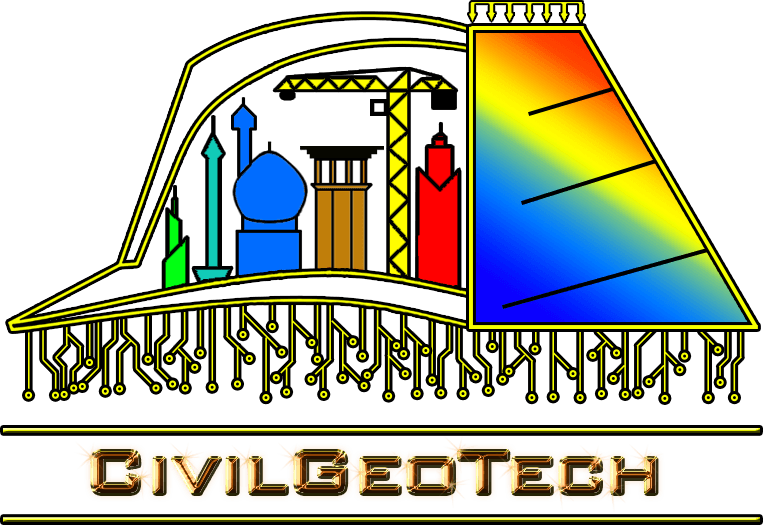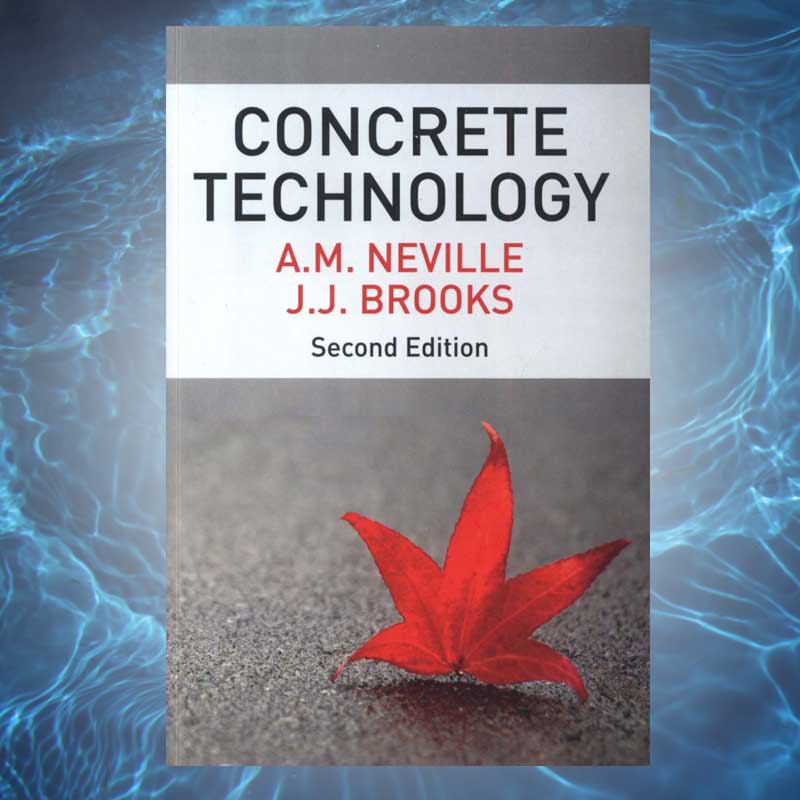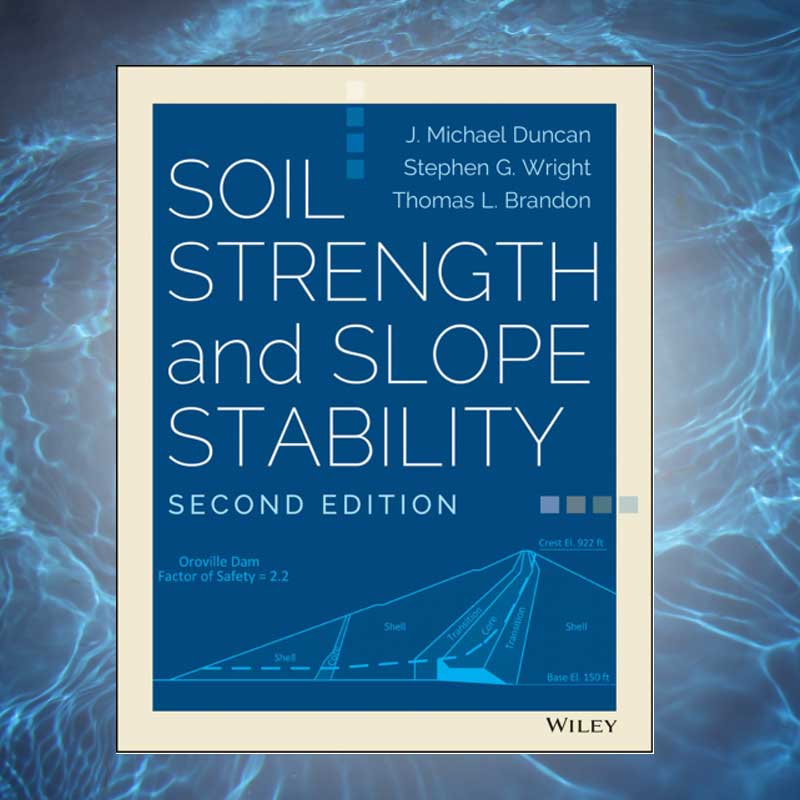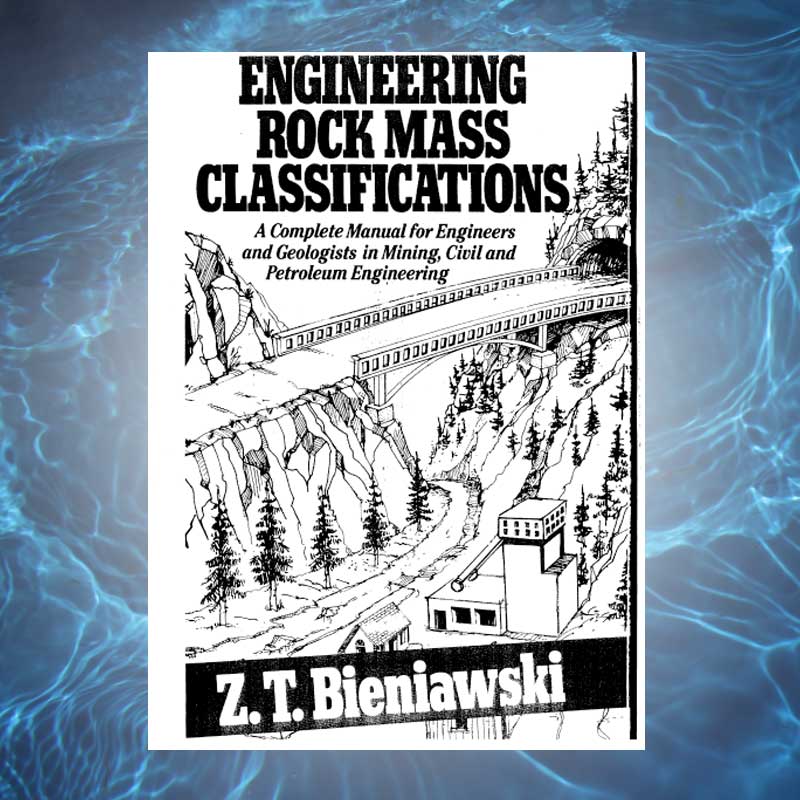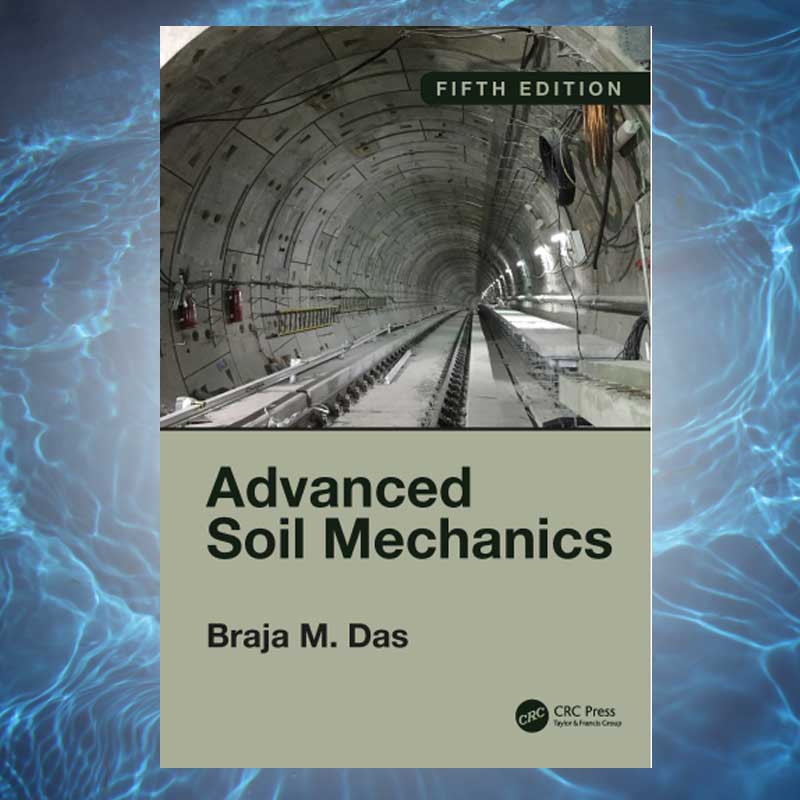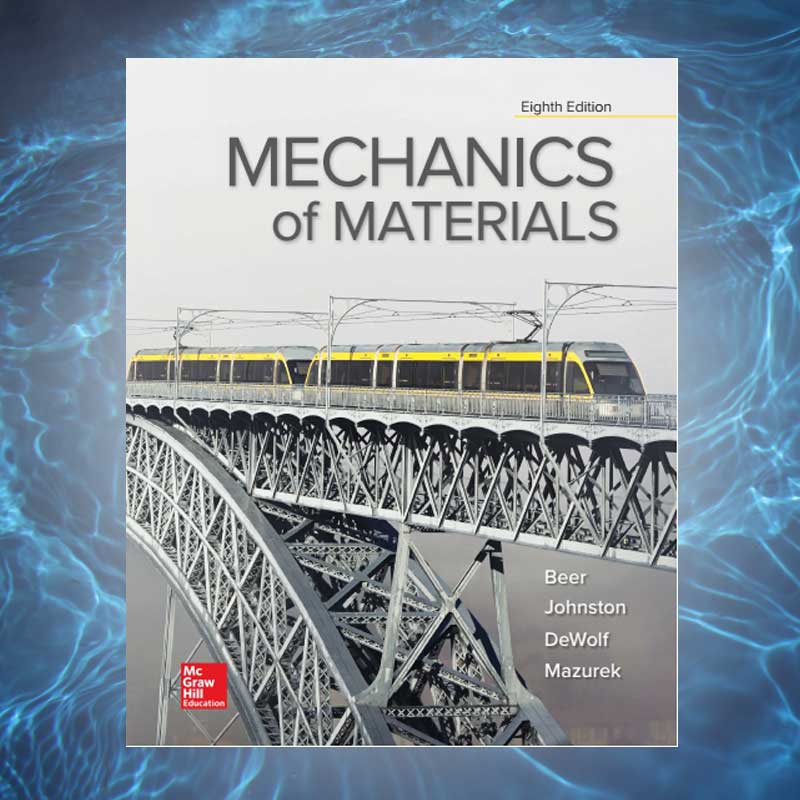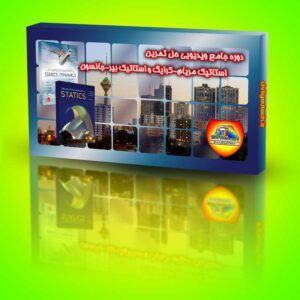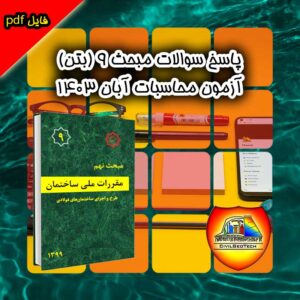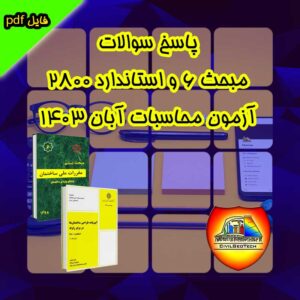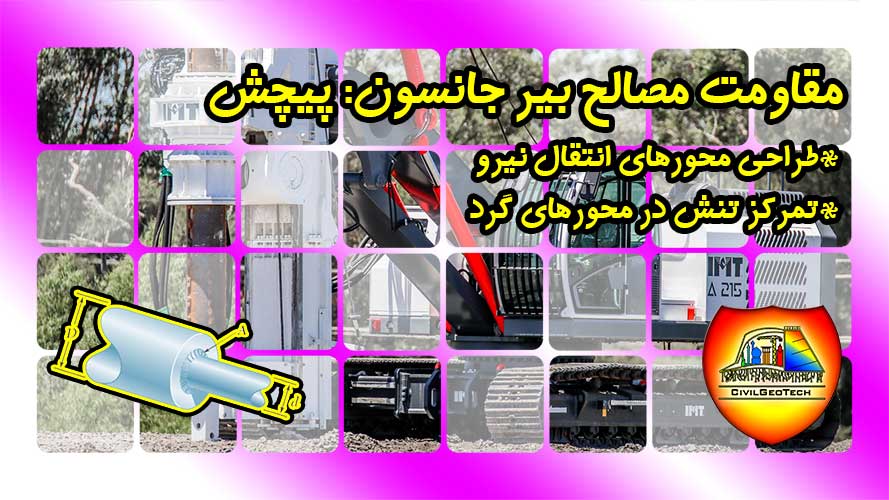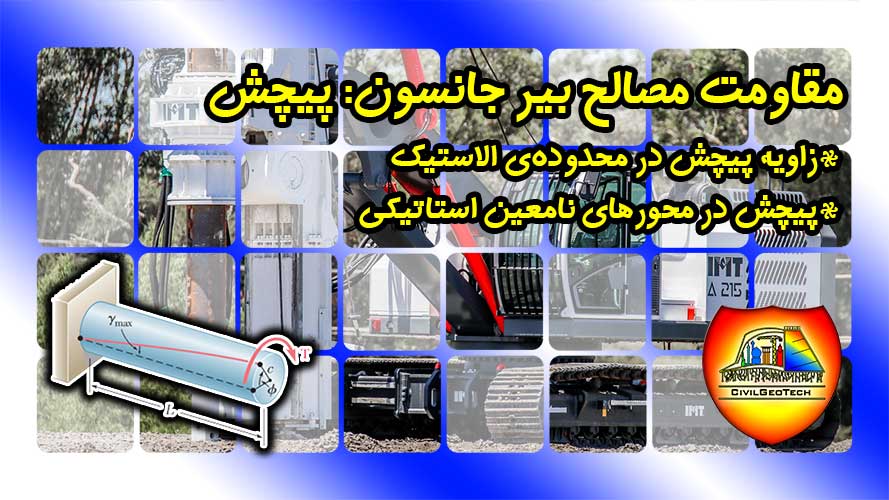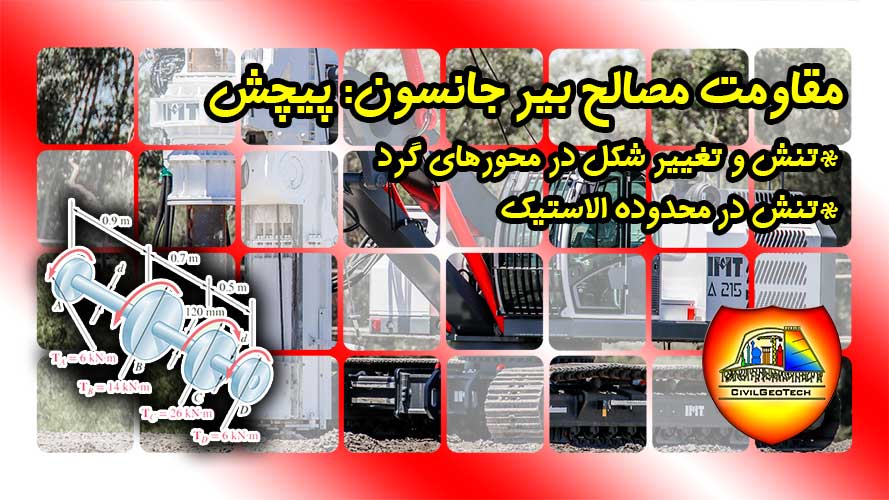Adam. M. Neville, and J. J. Brooks, (2010), Concrete technology, 2th ed, Pearson
مقدمه:
This book is aimed principally at university, college and polytechnic students who wish to understand concrete for the purpose of using it in professional practice. Because the book is written in English and because it uses both SI and the so-called old Imperial units of measurement, the book is of interest and value in many countries, probably world wide.
The large incidence of material (as distinct from structural) failure of concrete structures in recent years bridges, buildings, pavements and runways is a clear indication that the professional engineer does not always know enough about concrete. Perhaps, in consequence of this ignorance, he or she does not take sufficient care to ensure the selection of correct ingredients for concrete making, to achieve a suitable mix, and to obtain a technically sound execution of concrete works. The effects of climate and temperature, and of exposure conditions, do not always seem to be taken into account in order to ensure lasting and durable concrete structures.
The remedy lies in acquiring appropriate knowledge at the same time as structural design is learned, because the purpose of understanding concrete and its behaviour is to support the structural design so that its objectives are fully achieved and not vitiated by the passage of time and by environ-mental agencies. Indeed, the structural designer should be adequately familiar with concrete so that structural detailing is predicated on a sound understanding of how concrete behaves under load, under temperature and humidity changes, and under the relevant conditions of environmental and industrial exposure. This book set out to meet those needs.
Since construction is governed by contractual documents and specifications, the various properties of concrete have to be described in terms of national standards and recognised testing methods. The book refers to the important British. European and American standards and shows how they link to the essential features of concrete behaviour.
An engineer involved in construction of a concrete structure, from a dam to a runway, from a bridge to a high-rise building, must design the concrete mix, unlike steel, this cannot be bought by reference to a supplier’s catalogue. The book discusses, with full examples, two of the most widespread methods of mix design, one American, the other British.
Producing a second edition ion of a book requires an explanation or even justification. We can offer two
First, in the 22 years since Concrete Technology was published yes, it was in 1987-there have been advances and changes in concrete technology. More than that, there have been published new standards, not only more advanced technically, but also in the sense of their range and applicability.
The old national, British standards have all but gone; they have been replaced by European Standards, used in the 27 countries of the European Union and also in Switzerland, Norway and Iceland. A book that uses the new standards is therefore likely to be useful in all those countries and in many others, especially in Africa and Asia, which rely fully, or in part, on European and American standards. Simultaneously, American standards published by the American Society for Testing and Materials (ASTM) and also standards and guides published by the American Concrete Institute (ACI) have evolved, often very substantially. A book intended for use world wide must reflect these developments.
In addition to the updating of standards, the second edition contains new material on developments in concrete technology. Specifically, we have included sections on fillers in the cementitious material, waterproofing and anti-bacterial admixtures, recycled concrete aggregate, and self-consolidating concrete. On the other hand, sulfur concrete composites, which started with a great flourish, are no longer used; accordingly, they have been removed from the book.
Finally, it should be pointed out that, since the success of a concrete structure is the concern of both the structural designer and the contractor, no graduate engineer, whatever his or her career plans, can be ignorant of concrete technology. And even if his or her specialization is not in concrete, the engineer will still need the material for retaining walls and foundations, for fireproofing and finishing, and for a multitude of ancillary works. He or she is therefore well advised to become thoroughly familiar with the contents of this book.
The second reason for a second edition of Concrete Technology is more subtle. The first edition has survived’ and been well accepted over what is a very long period in a technical world. There have been many revisions and minor updates, with fifteen impressions. We are proud of this tangible tribute to the quality of our book, but we felt that we should not rest on our laurels: the confidence given to us merits an effort on our part to pro-duce a better version of Concrete Technology, and we hope it, too, will have a long life. The fulfilment of that hope is, of course, in the hands of the readers.
این کتاب عمدتاً برای دانشجویان دانشگاه، کالج و پلی تکنیک است که مایل به درک بتن برای استفاده از آن در عمل حرفه ای هستند. از آنجایی که این کتاب به زبان انگلیسی نوشته شده است و به دلیل استفاده از واحدهای اندازه گیری SI و به اصطلاح قدیمی امپراتوری، این کتاب در بسیاری از کشورها، احتمالاً در سراسر جهان، مورد توجه و ارزش است.
وقوع زیاد شکست مصالح (متمایز از سازه) سازههای بتنی در سالهای اخیر، پلها، ساختمانها، روسازیها و باند فرودگاه نشانهی واضحی است که مهندس حرفهای همیشه اطلاعات کافی در مورد بتن ندارد. شاید در نتیجه این ناآگاهی، برای اطمینان از انتخاب مواد صحیح برای ساخت بتن، دستیابی به مخلوط مناسب و اجرای صحیح فنی کارهای بتن، دقت کافی را به عمل نیاورد. به نظر نمی رسد که اثرات آب و هوا و دما و شرایط قرار گرفتن در معرض همیشه برای اطمینان از سازه های بتنی بادوام و بادوام در نظر گرفته شود.
راه چاره در کسب دانش مناسب همزمان با یادگیری طراحی سازه است، زیرا هدف از درک بتن و رفتار آن حمایت از طرح سازه است تا اهداف آن به طور کامل محقق شود و با گذشت زمان و سازمان های محیط زیستی آسیب نبیند. در واقع، طراح سازه باید به اندازه کافی با بتن آشنا باشد تا جزئیات سازه بر اساس درک درستی از نحوه رفتار بتن تحت بار، تحت تغییرات دما و رطوبت، و تحت شرایط مربوطه قرار گرفتن در معرض محیطی و صنعتی باشد. این کتاب برای رفع این نیازها تنظیم شده است.
از آنجایی که ساخت و ساز توسط اسناد و مشخصات قراردادی کنترل می شود، خواص مختلف بتن باید بر اساس استانداردهای ملی و روش های آزمایش شناخته شده توصیف شود. در این کتاب به انگلیسی های مهم اشاره شده است. استانداردهای اروپایی و آمریکایی را نشان می دهد و نشان می دهد که چگونه آنها با ویژگی های اساسی رفتار بتن مرتبط هستند.
مهندس درگیر در ساخت یک سازه بتنی، از سد تا باند، از پل تا ساختمان بلند، باید مخلوط بتن را طراحی کند، برخلاف فولاد، این را نمی توان با مراجعه به کاتالوگ تامین کننده خریداری کرد. این کتاب با مثالهای کامل، دو مورد از رایجترین روشهای طراحی ترکیبی، یکی آمریکایی و دیگری بریتانیایی را مورد بحث قرار میدهد.
تولید نسخه دوم کتاب نیاز به توضیح یا حتی توجیه دارد. ما می توانیم دو مورد را ارائه دهیم
اول، در 22 سالی که Concrete Technology منتشر شد بله، در سال 1987 بود – پیشرفت ها و تغییراتی در فناوری بتن وجود داشته است. علاوه بر این، استانداردهای جدیدی منتشر شده است، نه تنها از نظر فنی پیشرفته تر، بلکه از نظر دامنه و کاربرد آنها نیز.
استانداردهای قدیمی ملی و بریتانیایی همه از بین رفته اند. آنها با استانداردهای اروپایی جایگزین شده اند که در 27 کشور اتحادیه اروپا و همچنین در سوئیس، نروژ و ایسلند استفاده می شود.
بنابراین، کتابی که از استانداردهای جدید استفاده می کند، احتمالاً در همه آن کشورها و در بسیاری دیگر، به ویژه در آفریقا و آسیا که کاملاً یا تا حدی بر استانداردهای اروپایی و آمریکایی متکی هستند، مفید خواهد بود. به طور همزمان، استانداردهای آمریکایی منتشر شده توسط انجمن آمریکایی آزمایش و مواد (ASTM) و همچنین استانداردها و راهنماهای منتشر شده توسط مؤسسه بتن آمریکا (ACI) اغلب بسیار اساسی تکامل یافته اند. کتابی که برای استفاده در سراسر جهان در نظر گرفته شده است باید این تحولات را منعکس کند.
علاوه بر به روز رسانی استانداردها، ویرایش دوم حاوی مطالب جدیدی در مورد پیشرفت در فناوری بتن است. به طور خاص، ما بخش هایی را در مورد پرکننده ها در مواد سیمانی، مواد افزودنی ضد آب و ضد باکتری، سنگدانه های بتن بازیافتی و بتن خود یکپارچه گنجانده ایم. از سوی دیگر، کامپوزیت های بتن گوگردی که با شکوفایی بسیار آغاز شده اند، دیگر مورد استفاده قرار نمی گیرند. بر این اساس از کتاب حذف شده اند.
در نهایت باید به این نکته اشاره کرد که از آنجایی که موفقیت یک سازه بتنی دغدغه طراح سازه و پیمانکار است، هیچ مهندس فارغ التحصیلی با هر برنامه شغلی که دارد نمی تواند از فناوری بتن بی اطلاع باشد. و حتی اگر تخصص او در بتن نباشد، مهندس باز هم به مواد لازم برای دیوارهای حائل و فونداسیون، برای عایق کاری و تکمیل، و برای بسیاری از کارهای جانبی نیاز دارد. بنابراین به او توصیه می شود که با مطالب این کتاب به طور کامل آشنا شود.
دلیل دوم برای ویرایش دوم Concrete Technology ظریف تر است. نسخه اول باقی مانده است و در طول دوره بسیار طولانی در دنیای فنی به خوبی پذیرفته شده است. بازبینیها و بهروزرسانیهای جزئی زیادی با پانزده برداشت صورت گرفته است. ما به این ادای احترام ملموس به کیفیت کتاب خود افتخار می کنیم، اما احساس می کردیم که نباید به افتخارات خود تکیه کنیم: اعتماد به نفسی که به ما داده شده سزاوار تلاش ما برای تولید نسخه بهتری از فناوری بتن است، و ما امیدواریم که آن نیز عمر طولانی داشته باشد. تحقق این امید البته در دست خوانندگان است.
فهرست عناوین:
1- Concrete as a structural material
2- Cement
3 – Normal aggregate
4 – Quality of water
5- Fresh concrete
6 – Strength of concrete
7 – Mixing, handling, placing, and compacting concrete
8 – Admixtures
9 – Temperature problems in concreting
10 – Development of strength
11- Other strength properties
12- Elasticity and creep
13 – Deformation and cracking independent of load
14- Permeability and durability
15- Resistance to freezing and thawing
16- Testing
17- Conformity with specifications
18- Lightweight concrete
19 – Mix design
20 – Special concretes
21- An overview
